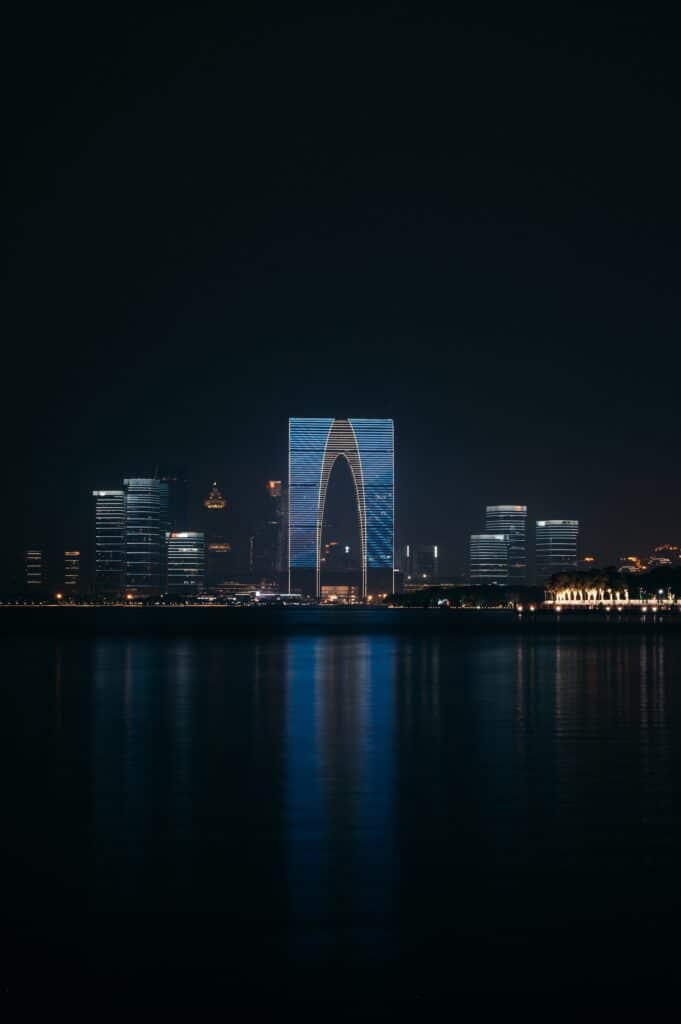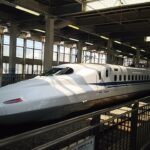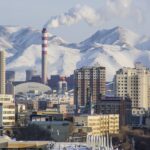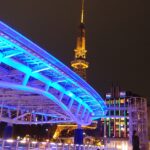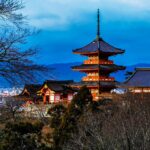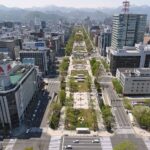Suzhou’s public transportation system makes getting around the city simple and effective. Public transportation services in the city include buses, the subway, light rail, ferries, and public taxis. The bus system, which has the most routes and is the most used, is widely used. Along with the city’s tremendous growth, the subway and light rail systems are likewise well-liked and expanding. All of these choices offer dependable and reasonably priced transportation to get you around Suzhou.
Suzhou metro (苏州轨道交通) – Basic information
Suzhou’s metro system makes getting around the city easy. It runs from the north to the south of the city and has six lines and more than 196 stations. It is easy to travel to your destination because many of the stations are integrated with bus lines and other transportation systems. The prices are fairly reasonable and range from 2 to 7 RMB, depending on the distance. The metro system provides a free mobile app that you can use to plan your route. You can quickly learn the route, departure times, and expected travel time using this app.
The lines of the Suzhou subway system
Line 1 (green): Mudu to Zhongnan Jie
It has 24 stations and is 25 kilometers (16 km) long. Beginning on December 26, 2007, work on Line 1 was finished in 2012.
Line 2 (red): Qihe to Sangtiandao
It is a line that normally runs north-south and connects Suzhou North Railway Station in Wuzhong District with Baodaiqiao South Station near the Precious Belt Bridge. Line 2 joined the Suzhou Rail Transit network and began operating in December 2013. In September 2016, the new 13 stations went into operation.
Line 3 (Orange): Suzhou Xinqu Railway Station to Weiting
From Suzhou Xinqu Railway Station to Weiting, the railway travels east to west. In late 2023, Suzhou Rail Transit’s Line 3 and Line 11 will have through service.
Line 4 (Blue): Longdaobang/Hongzhuang to Tongli/Muli
Its primary route runs from Longdaobang to Tongli in Suzhou’s south and southeast. After arriving at the Suzhou train station, it roughly continues along Renmin and Dongwubei roads till Tongli in the Wujiang District. The first section of the upcoming Line 7 is the Southwest Branch of Line 4. Following the same route as the main line till Hongzhuang, this branch is scheduled to curve in a south-western direction to reach Youxiang Road.
Line 5 (Pink): Taihu Xiangshan to Yangchenghu South
Line 5 of Suzhou Rail Transit runs from the southwest to the northeast. There are 44.1 kilometers in the line. 50 six-car Type B fully automated subway trains were bought for Line 5 in total.
Line 11 (PINK CHALK): Weiting to Huaqiao
Line S1 was the previous name for it during planning and construction. The line will make use of six Type B cars that can travel up to 100 km/h
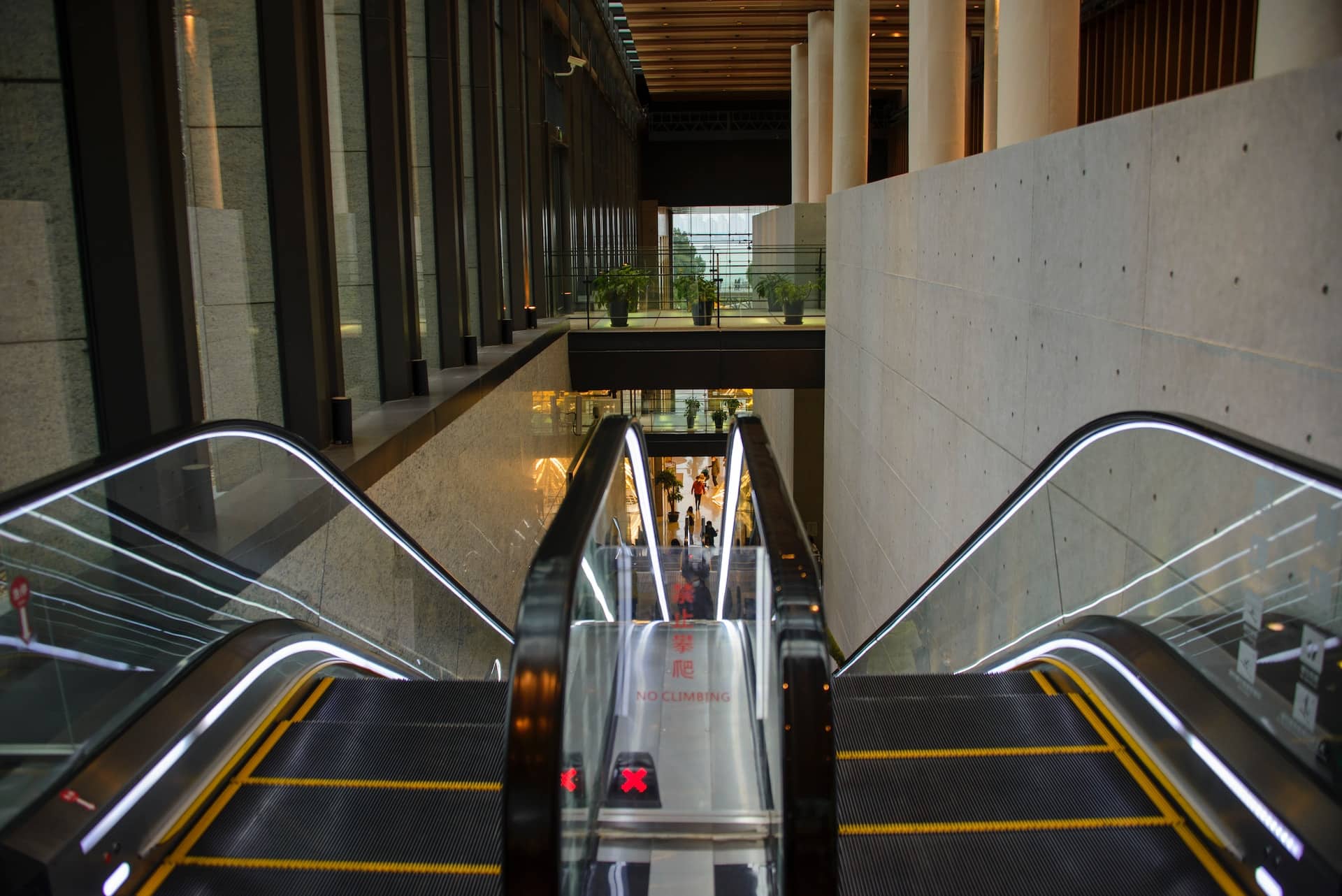
Lines under construction and other line modifications in Suzhou:
- Rail Transit’s Line 6 is presently being built. It will link Suzhou New District, Suzhou Industrial Park, and Suzhou’s city center, Gusu District, running north-west to south-east.
- Suzhou’s Line 7 of the Suzhou Rail Transit is a rapid transit line that is currently being built. Beginning in 2019 work has begun. The length of the line will be 29 kilometers. Plans provide for operating Line 7 along the portion of Line 4 that runs between the stations of Hongzhuang and Muli. In the line is Tian’edang Parking Area.
- Suzhou Rail Transit Line 8 is a projected “L”-shaped rapid transit line that runs along both the east-west and north-south axes. It will serve Suzhou Industrial Park, Gusu District, Xiangcheng District, and Suzhou New District all at once. On September 30, 2019, construction began; it is anticipated to be finished in 2024.
Map of Suzhou Metro 2023: Free Download in PDF
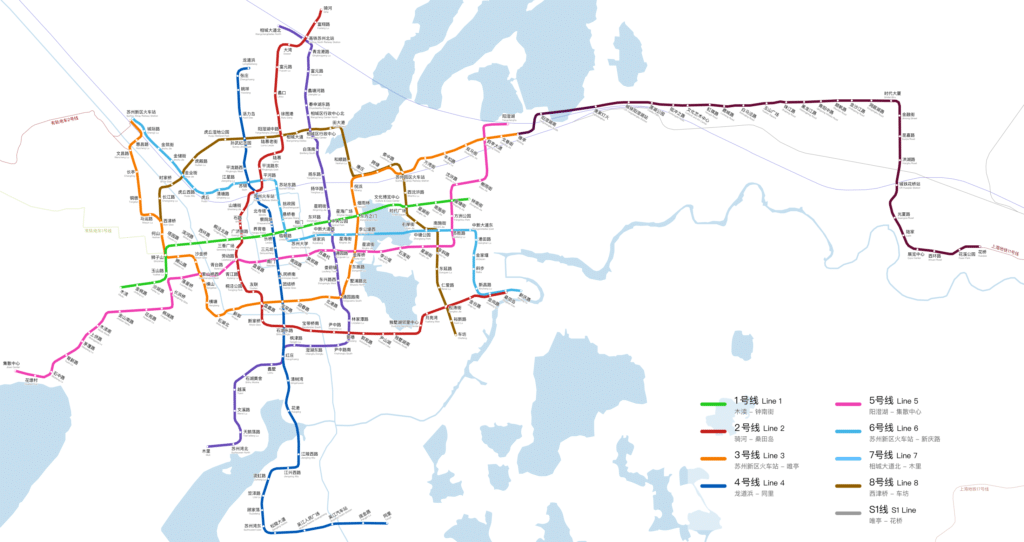
Click on the image and download the map of Suzhou´s underground system for 2023
Anyone seeking to visit this exciting and bustling city might greatly from the Suzhou Metro map for 2023. Using this free PDF file, you can easily plan your trip and navigate the city. It allows you to confidently plan your trip to Suzhou in advance by outlining all the metro lines as well as the important stops and stations. The map also makes it simpler to organize a fun day out by clearly identifying all the tourist attractions. It has never been simpler to explore all that Suzhou has to offer thanks to this readily available map.
Public transport tickets in Suzhou: the Best types for travelers & actual prices
The single-journey ticket is the most popular ticket type for public transportation in Suzhou. These tickets are offered at both the ticket offices and the ticket machines in the stations. Buses, the metro, ferries, and maglev trains all accept them for a single trip. Bus fares start at 2 RMB and go up to 40 RMB for the maglev train.
The best choice for several trips is to purchase a prepaid card. All modes of public transit accept these cards, which may be purchased at the ticket offices. The card can be topped off on the fly, and the fares are reduced. For instance, using a prepaid card reduces the cost of a single bus trip from 2 RMB to 1 RMB.
There are also longer-term passes available for those who will be in Suzhou for a longer time. A three-day permit called the Suzhou Tourist Permit gives you unlimited access to all types of public transit. It is an excellent way to save money and maximize your time in Suzhou, and it only costs 80 RMB.
In general, Suzhou’s public transportation ticket options are numerous and reasonably priced. The Suzhou Tourist Pass, which costs 80 RMB, is the ideal option for those who will be in town for three days. By doing this, you’ll be able to maximize your time there and tour the city without worrying about the price of individual tickets.
Timetables & Schedules of Suzhou Metro system
The daily hours of operation for the Suzhou Metro are 6:00 p.m. to 0:00 a.m. The trains operate every 3 to 5 minutes during peak hours (06:00 to 9:00 and 17:00 to 20:00), and every 5 to 10 minutes during lunchtime and late-night hours (09:00 to 17:00 and 20:00 to 23:00). Passengers should check the precise line they are taking before their travel as the frequency of service varies according on the line and the time of day.
What Are Other Options For Public Transportation In Suzhou?
In addition to these, there are cabs, buses, and bike sharing in Suzhou. The Suzhou Public Transportation Group runs routes all throughout the city for buses. Additionally accessible throughout the city, taxis can be called or reserved via an app. Additionally, Suzhou has a thriving bike sharing industry, with numerous businesses renting out both dockless and station-based bikes. It is simple to move around Suzhou thanks to all of these modes of public transportation.
public buses
Suzhou, China is a stunning city noted for its gardens, bridges, and canals that is simple to get to using the city’s public bus system. Suzhou offers a reliable and inexpensive way to get around the city thanks to its large bus route network.
The Suzhou Industrial Park Public Transportation Corporation (SIP-TRAN) runs the city’s public buses. The buses have air conditioning, plush seats, and simple payment methods like cash, pre-paid cards, and mobile payments. Based on the distance traveled, the fee can range from 1 to 3 RMB (Chinese yuan).
In Suzhou, there are more than 300 bus routes, and the majority of them make stops at numerous locations including popular tourist destinations, shopping malls, and residential districts. The Nos. 20, 28, 49, and 88 are some of the most well-liked bus routes. From the Suzhou Railway Station to the Hi-tech Garden, the Suzhou Industrial Park to the Jinji Lake, the Suzhou Railway Station to the Jinji Lake, and the Suzhou Railway Station to the Suzhou New District are all served by the No. 20 bus, No. 28 bus, No. 49 bus, and No. 88 bus, respectively.
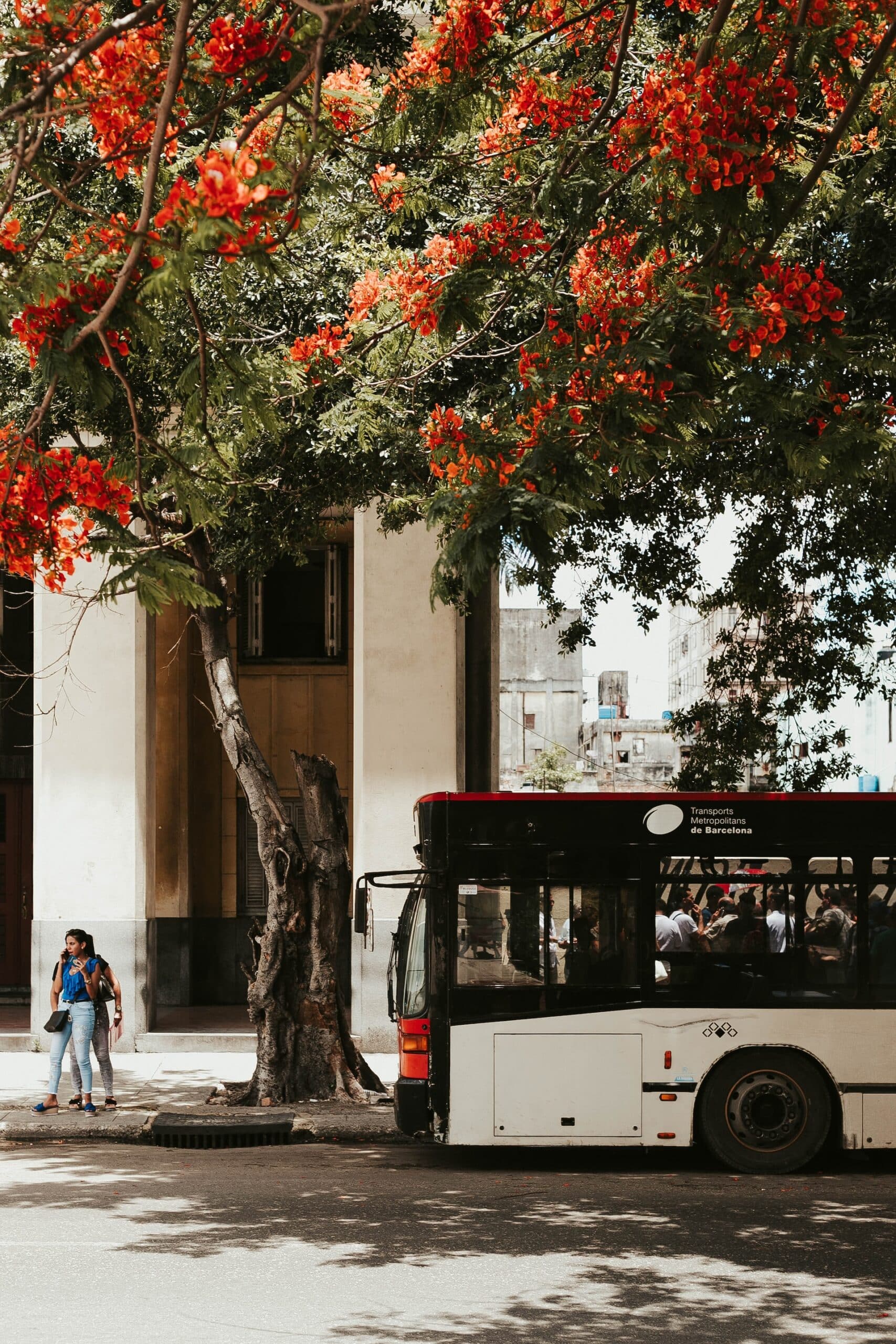
Travelers should be informed of the policies and guidelines when using the public transportation system. Bus riders should keep an eye out for signs indicating which stop the bus is going to because the buses do not stop at every stop along the route. It’s also crucial to remember that smoking is not permitted on the buses, and they do not accept outside food or beverages.
suburban TRAINS
The Yangtze River Delta city of Suzhou is well-known for its system of canals, bridges, and pagodas. Suzhou, one of the most significant cities in the area, has excellent rail connections to other cities nearby. Here is a look at how the city’s public train system operates as well as the key train connections to nearby cities.
The China Railway Corporation (CR) runs the Suzhou public train system. It offers both high-speed and conventional trains, the former being the quickest and most expensive choice. High-speed trains can get you to Suzhou in a matter of hours, while regular-speed trains take longer but are frequently less expensive. The city is also connected to other Chinese cities via the national rail network.
Suzhou has the most significant train links to Shanghai, Hangzhou, and Nanjing. For those wishing to travel between the two cities quickly, the high-speed rail between Suzhou and Shanghai takes a little under an hour. While the railway from Suzhou to Nanjing takes about 3 hours, the high-speed train from Suzhou to Hangzhou takes a little under 2 hours.
Regular-speed trains also link Suzhou to other regional cities in addition to these crucial linkages. Though usually slower, these trains can be a suitable choice for passengers seeking a cheaper option. Regional trains also connect Suzhou to places like Wuxi, Changzhou, and other places in the vicinity.
How To Get From Suzhou Guangfu Airport (SZV) To The City Center With Public Transport?
Public transportation makes getting to the city core from Suzhou Guangfu Airport simple. The airport, which is south of the city, has excellent access to Suzhou’s downtown and other important areas.
Using the airport shuttle bus is the most practical way to get from the airport to the city center. The airport shuttle bus picks up passengers outside the arrivals hall and travels to several points throughout the city. The bus ride can take up to an hour, depending on where you’re going. The Suzhou Airport Bus App and the airport ticket counter are the two places where passengers can buy shuttle tickets.
Suzhou Metro Line 4 is the best choice for individuals seeking a speedier route. It takes roughly 15 minutes to go from the airport to the city center. At the airport station, there are ticket machines where you can buy metro tickets.
In Suzhou, there is also a good bus network that connects the airport and the city center. The 302, 304, and 315 bus routes are the busiest ones. The bus driver can purchase tickets for these buses, which run from 8 a.m. to 10 p.m., seven days a week.
There is a long-distance bus service that leaves the airport for those going to other parts of Suzhou. Shanghai, Wuxi, and Nantong are among the locations served by this bus service. At the airport’s ticket office, tickets can be purchased.
In conclusion, using public transportation makes it simple and comfortable to go from Suzhou Guangfu Airport to the city center. Travelers can easily and swiftly get where they’re going by using the Airport Shuttle Bus, Metro Line 4, city buses, or long-distance buses.
How do I spend 3 days in Suzhou?
Start out the first day by going to the well-known Humble Administrator’s Garden, which is a UNESCO World Heritage Site. Take some time to explore the grounds of this garden from the fifteenth century and stop by the numerous pavilions, halls, and ponds. Take a leisurely stroll along the Grand Canal, the longest man-made waterway in the world, thereafter.
Try one of the neighborhood eateries for lunch if you’re looking for something delicious. Suzhou’s eateries are renowned for their distinctive flavors and traditional fare. You can also try the popular local street food. Investigate Suzhou’s nightlife in the evening. You can dance the night away at a variety of bars and clubs while listening to the newest music. You can also enjoy a leisurely boat tour around the canal if you’d prefer something a little more relaxed.
Visit a few of the other Suzhou sights on the second day. The city is renowned for its profusion of temples, including the North Temple Pagoda, the Tiger Hill Pagoda, and the Lingering Garden. Spend some time exploring these historical locations to discover Suzhou’s rich culture and history. Then, pause and take pleasure in a traditional Chinese tea ceremony. There are many tea houses across the city where you can sample various teas and discover how tea is made. Dinner should be enjoyed at some of the neighborhood eateries, such as the well-known Huqiu Restaurant, which provides classic fare like braised pig, sweet-and-sour fish, and stir-fried veggies.
Visit a few of Suzhou’s traditional markets on the third day. The city is renowned for its crowded marketplaces, where you can purchase anything from antiques to handcrafted goods. After that, go along the historic city wall, which was constructed in the sixth century. Go to one of the city’s many karaoke bars at night and perform your favorite songs there. Or, if you’re looking for something a little more sedate, check out a tavern or eatery beside the canal. In either case, Suzhou will undoubtedly leave a lasting impression on you.
Overall, Suzhou is a wonderful city to visit, full of things to do and sights to see. You’ll be able to discover the city’s distinctive culture and take advantage of everything it has to offer with this 3-day itinerary.
What other metro systems are nearby in Suzhou?
Suzhou, which is situated in Eastern China, is adjacent to a large number of other cities that have metro systems. The metro systems in Wuxi, Changzhou, and Shanghai are the ones that are closest to Suzhou. These cities are all reachable by train from Suzhou in under two hours, making them great options for day trips or weekend getaways. Furthermore, the high-speed rail provides easy access to distant places like Nanjing and Hangzhou, each of which is only around 2.5 hours away. Suzhou is a fantastic hub for exploring the region because Jiangsu province has a number of metro systems, including those in Xuzhou, Yancheng, and Nantong.
Summary of our tour guide for Suzhou
I live in Suzhou and have a lot of expertise with public transit. I’ve utilized a range of modes of transportation while I’ve been here, including the metro, buses, and even taxis. The city’s bus system is practical, economical, and functional. The metro system is trustworthy and serves a large portion of the city. Taxis are more expensive than buses, which offer a more affordable means of transportation. Overall, Suzhou’s public transportation system is dependable and offers a convenient method to get around the city.
Top 5 FAQs and answers about Suzhou public transport?
Which forms of public transit are offered?
- In Suzhou, there are water buses, buses, the metro, and taxis. The bus system, which operates more than 2,000 buses in the city, is the most popular mode of public transportation. With six lines and more than 100 stops, the Suzhou Metro is a fast transport system that makes it easy to move throughout the city. In the city, there are also taxis available, but they are typically more expensive than buses and the metro. Another option is to take a water bus, which is a terrific way to cross the city’s rivers and canals.
What are the costs associated with using public transportation?
- Using public transit in Suzhou will cost you money, depending on the mode. A single trip on the bus or the metro costs 2 yuan (0.30 USD). One ride on a water bus costs 5 yuan ($0.75). The most expensive choice is a taxi, with rates beginning at 10 yuan (1.50 USD).
Is Suzhou’s public transportation secure?
- Yes, Suzhou’s public transportation is generally secure. The metro and buses are frequently patrolled, and there is a significant security presence in the city. However, it’s always advisable to travel safely, and it’s not a good idea to travel alone late at night.
What services are offered to those who are disabled?
- Suzhou’s government has taken a number of steps to make sure that people with disabilities can use the city’s public transportation system. There are handicapped-accessible bus stops and metro stations, and many bus and metro routes give disabled passengers priority seating.
Do you offer any discounts for using public transportation?
- Yes, Suzhou offers a number of discounts on public transportation. Students, seniors, and disabled individuals can all receive discounts. People who buy a transport card, which can be used on buses and the metro, can also receive discounts.
Useful links

